BRIAN
INSTRUCTIONAL DESIGN

WILSON
INSTRUCTIONAL TECHNOLOGY

Instructional designer, technologist, and programmer with extensive experience in:
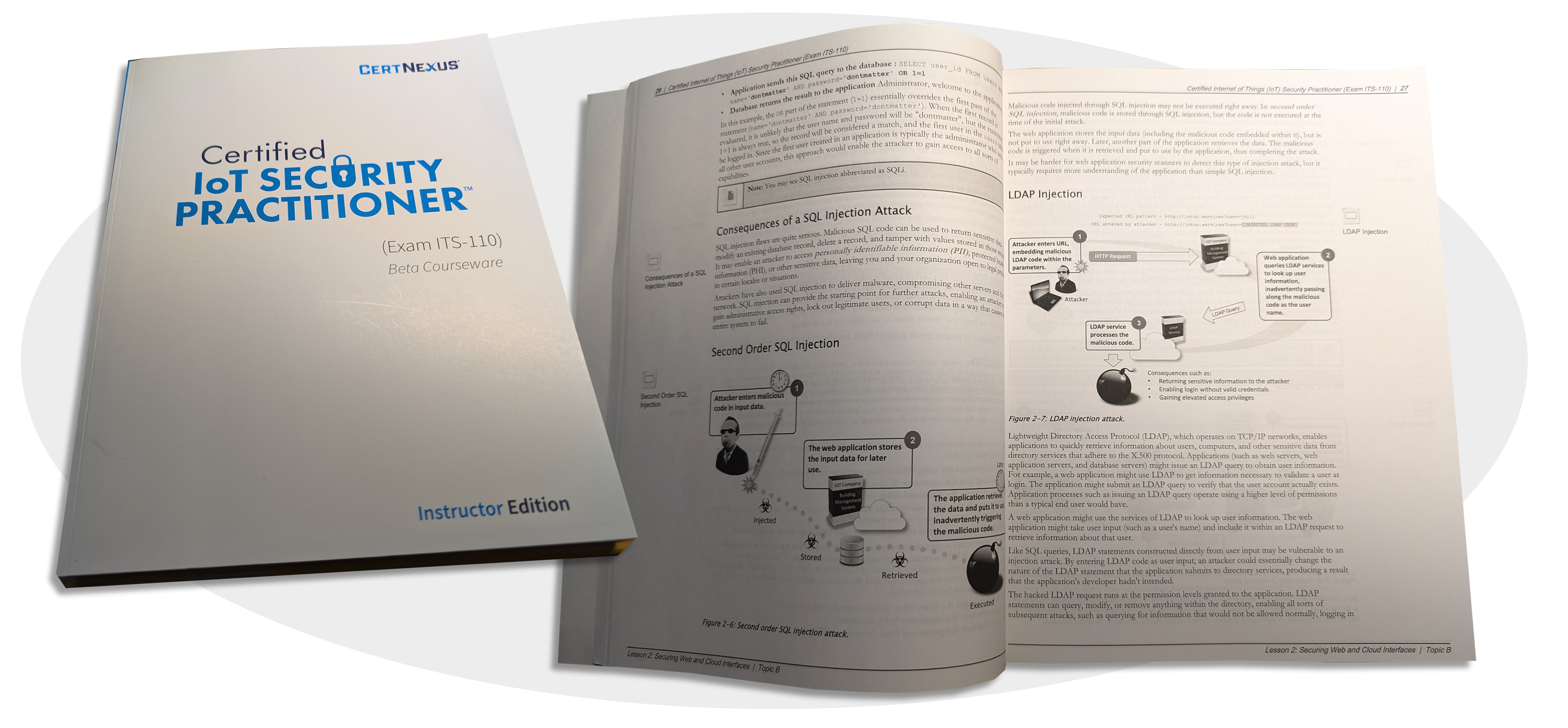
Commercial off-the-shelf training manuals and custom courses.
Role: Instructional Designer / Author
Customers: Logical Operations, Element K, Pearson Publishing, Barnesandnoble.com, Army Medical Department (AMEDD), NORAD/US Northern Command, Others
Requirement: Develop classroom-ready instructional content to support K-12, college/university, and adult education. Quickly learn complex subject matter and research how it is used in real-world scenarios. Identify knowledge, skills, and attitudes needed to achieve desired performance outcomes. Interview subject matter experts, if available. Transform existing documentation into content appropriate for the target audience and delivery methods. Design, write, and storyboard content for media such as training manuals, interactive assets, video, simulations, learning games, practice activities, assessments, PowerPoint slides, data files, quick reference cards, instructor notes, and course packs for college distance-learning courses.
Deliverables: Authored instructor-led training manuals, web-based asynchronous distance learning courses, and supplemental materials for a variety of customers and content areas.
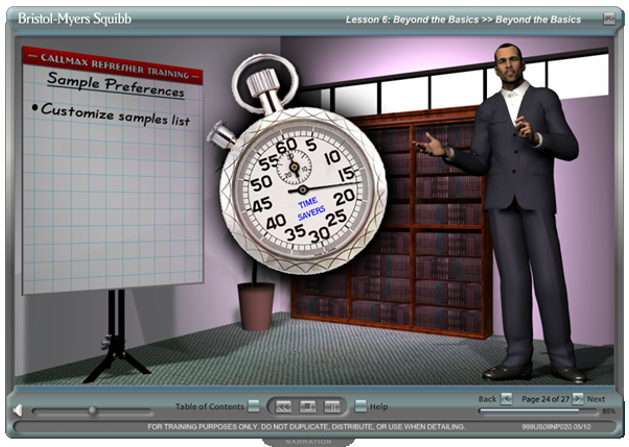
Pharmaceutical sales training in an interactive self-paced e-learning format.
Roles: Multimedia Programmer, Instructional Designer, Animator, Illustrator, User Interface Designer
Customers: Ziff-Davis Education, Element K, Global Knowledge, Bristol-Myers Squibb, Sara Lee, Kraft, Others
Requirement: Develop software application demonstrations, simulations, animations, and videos by capturing screen elements, creating digital illustrations, rendering 3D models, and editing video. Add scripted behaviors to provide interactivity.
Deliverables: Developed a wide variety of e-learning courses to meet customer requirements.
Development tools have included Adobe Creative Suite, Ray Dream 3D, Poser 3D, Captivate, Articulate, and various other e-learning authoring tools.
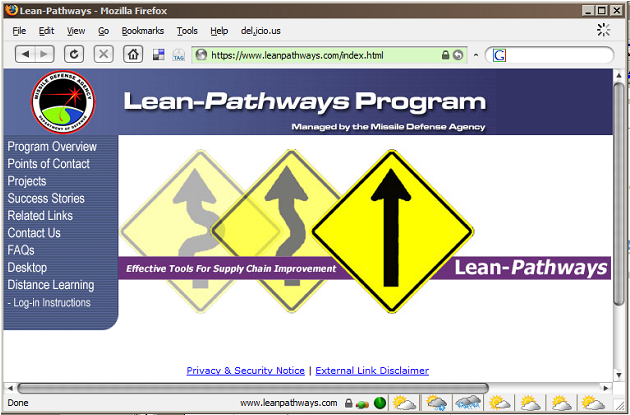
The Lean Pathways website.
Roles: Instructional Designer, Scripter / Process Automation Developer
Customers: U.S. Office of Naval Research, U.S. Missile Defense Agency
Requirement: Reduce production cost and improve quality of products produced by Department of Defense weapons systems manufacturing prime contractors, who produced an estimated 65 to 80 percent of parts and components in the U.S. defense systems supply chain.
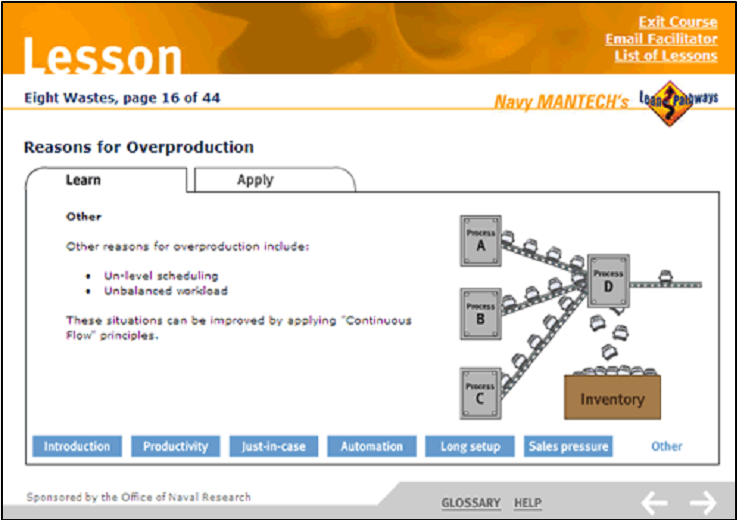
E-learning module introducing the Eight Wastes concept.
Deliverables
Sample program results:
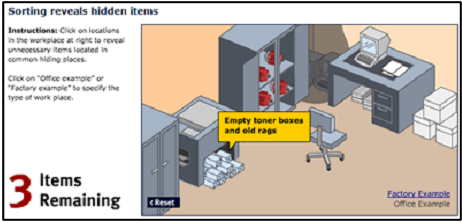
Activities included games for learning.

Interactive, animated "virtual city" user interface.
Roles: Web Application Developer, Illustrator, Media Developer
Customer: Schneider Electric
Requirement: Our team had already developed various product portal web sites for Schneider employees and customers to learn about their electronic products, depicted in various commercial and industrial contexts. The customer wanted a way to connect all of the product sites in a "virtual city" and to have a means for Schneider employees to update content on all of the web sites.
Deliverables: Developed interactive virtual city user interface to enable users to access portal sites for various product venues (e.g., carwash/convenience store, stadium, waste treatment plant, retail center, etc.).
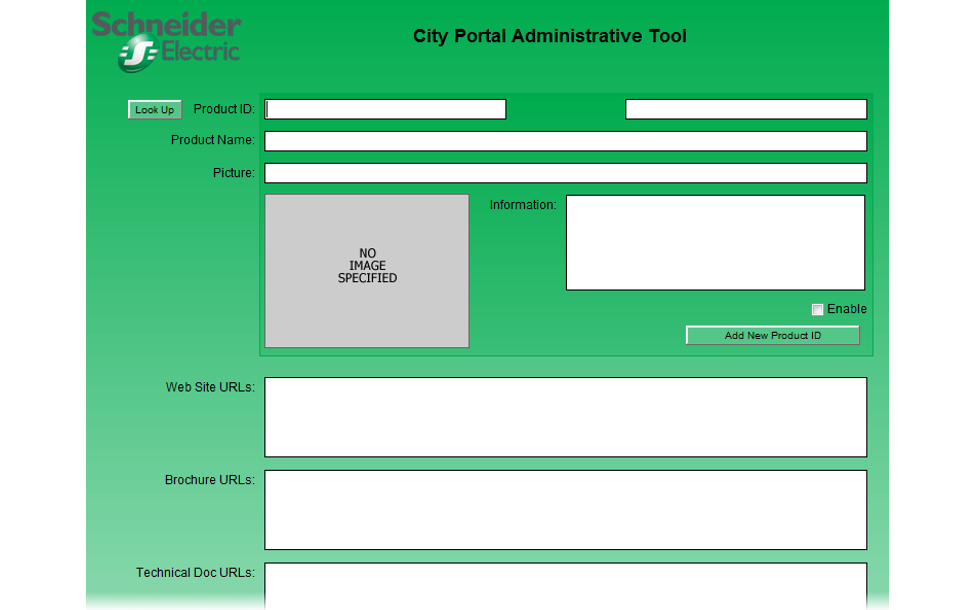
The web-based City Portal Administrative tool enabled administrators to add, update, and revise product information.
Role: Technical Illustrator
Customers: Various
Requirement: Create diagrams and illustrations to help students learn complex or abstract subject matter.
Deliverables: Authored slides, figures, diagrams, flow charts, infographics, and interactive components to simplify complex information, visualize abstract concepts, make content more interesting and engaging, illustrate relationships and interactions, reduce cognitive load, and enhance retention.
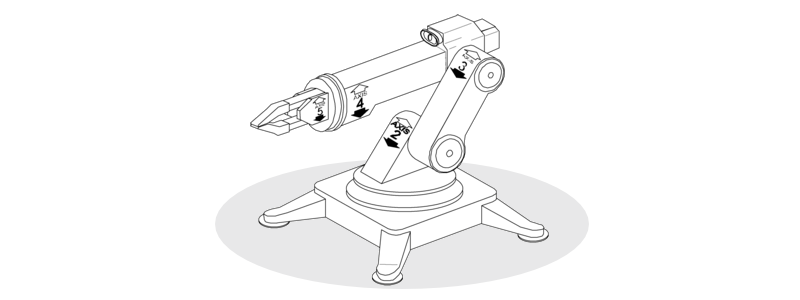
Robot trainer illustration for an activity manual that accompanied a K-12 STEM kit.
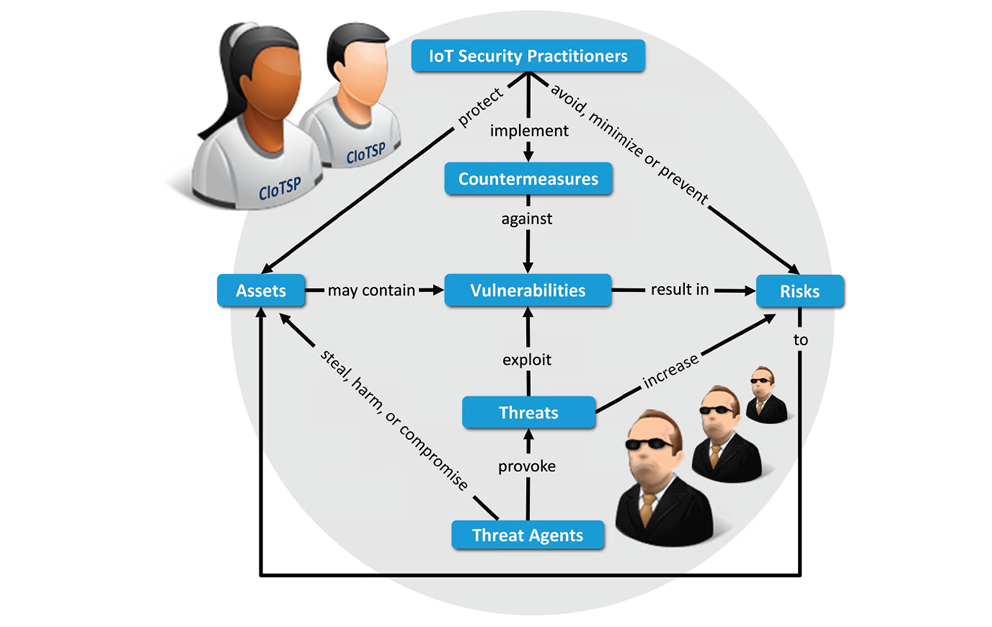
The relationship between risk management concepts depicted in cybersecurity course.

Game-based learning environment.
Roles: Simulation Technical Lead, Programmer
Customer: U.S. Air Force
Requirement: Produce a game/simulation platform to prepare students (medical practitioners) for further training. Students would go on to get hands-on training using a haptic simulator—essentially a robotic "patient" with expensive, disposable components that could only be used for one training session. The Air Force wanted a way to certify that students were prepared to use the haptic simulator. This game provided students with practice in various anesthesia procedures, while certifying that they thoroughly understood the procedures.
Deliverables: Developed the technical framework for the game and led the efforts of the programming team. Worked with a cross-discipline team including programmers, instructional designer, graphic designer, and subject matter experts.

Wireframe illustration (rough design sketch) from an early draft of the software requirements.
Role: Electronic Kit Designer and Course Developer
Customer: CertNexus
Requirement: Design an electronic kit to support a wide range of activities for a course on Internet of Things. Topics to be covered include the challenges of configuring lightweight computing devices, keeping devices and communications secure, and transferring telemetry data over a network for collection and processing. Kit cost must be kept under $20 for all components while avoiding vendor lock-in and potential supply chain problems.
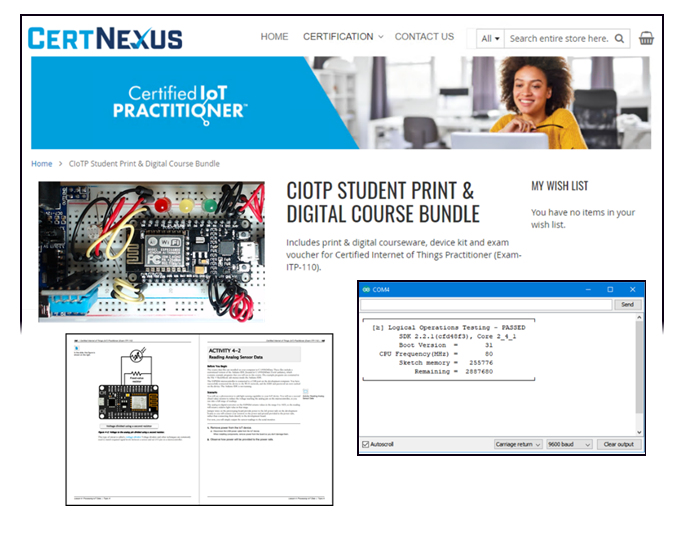
Deliverables: A boxed and branded electronics kit, complete with magnifying glass, microcontroller, breadboard, sensors, resistors, LEDs, labeled wiring, and USB cable, for under $20.
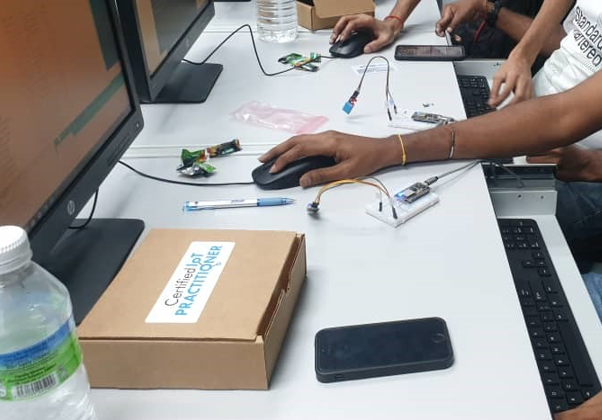
Students using the kit in a class activity.
Roles: Instructional Designer (front-end analysis and concept), Software Developer
Customer: NORAD / U.S. Northern Command
Primary Development Tools / Languages
Requirement: Provide an engaging seminar experience for officers exploring a response to domestic terrorism and disaster scenarios. Previously, activities had been conducted in a seminar setting, using PowerPoint slides to lead discussion.
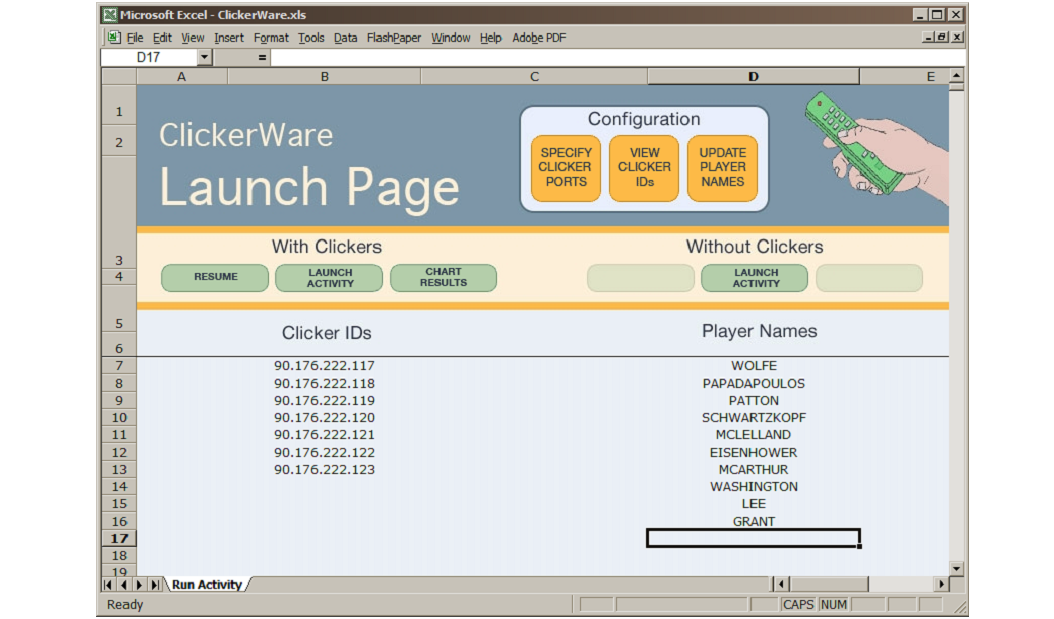
Registering participants at the start of the session.
Deliverables: Clickerware authoring and delivery system for branching collaborative learning exercises. Class Response Systems (or "clickers") are commonly used in college classrooms. I applied the clicker concept to branching simulation exercises conducted by NORAD/USNORTHCOM.
Clickerware addressed the need to engage all participants and capture group decisions for later analysis.
Deliverables included:
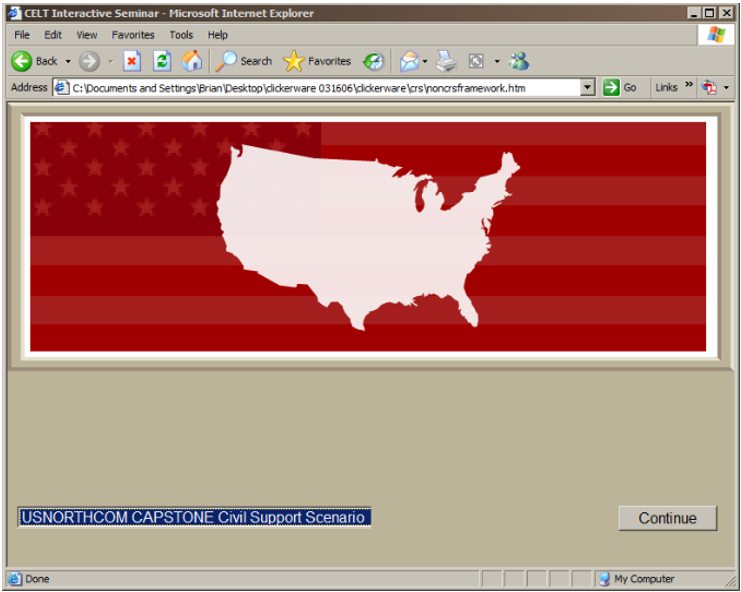
Branching video-based interactive exercise, with space reserved at the bottom to show player responses.
Role: Course Developer
Customer: Logical Operations
Requirement: Create example projects for programming courses.
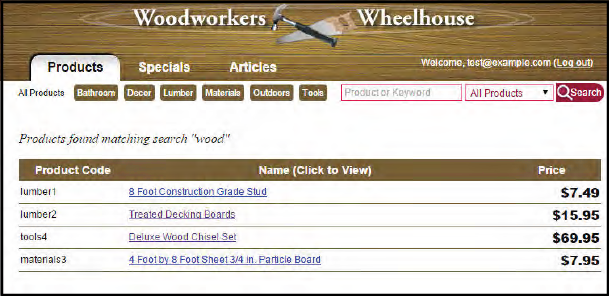
Cloud application that students develop in a course on Google App Engine.
Deliverables: Software projects covering a wide range of platforms, tools, development frameworks, and programming languages, such as Windows (C# and XAML), Android (Java), iOS (Swift, Objective-C), Cloud (Google App Engine, Python, Jinja, SQL), and others.
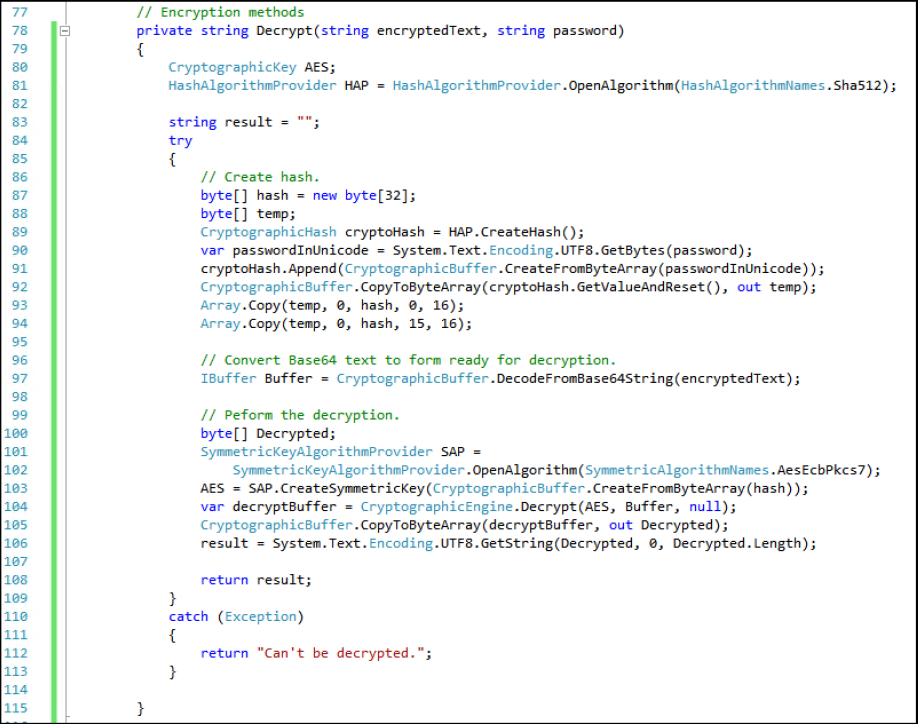
Portion of code from an introduction to encryption in a Windows UWP app development course.
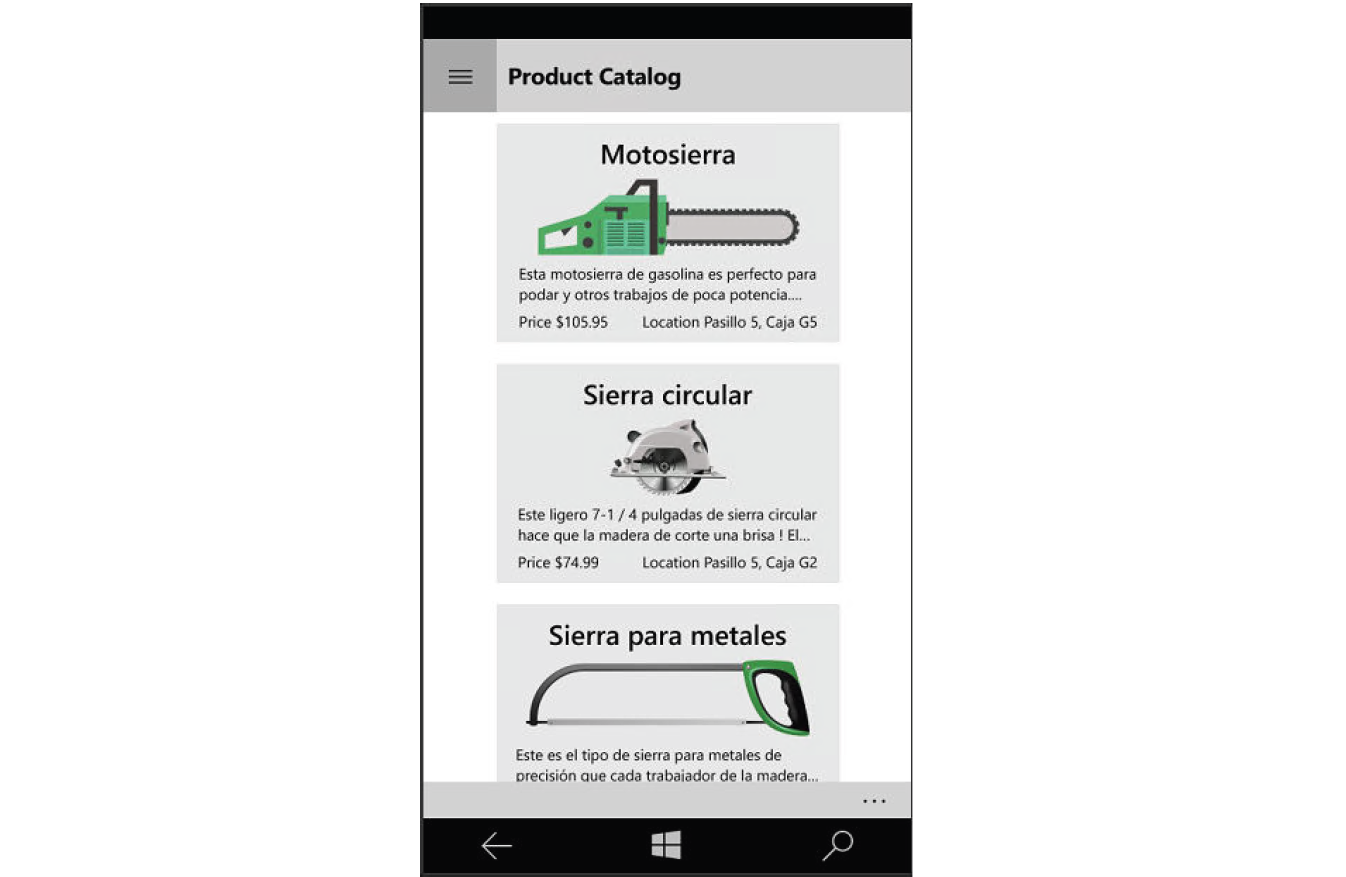
Android app from a lesson on internationalization and localization.
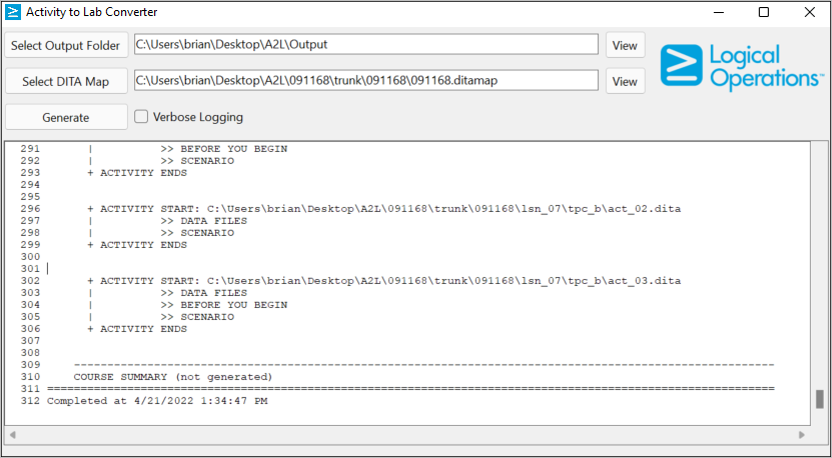
Publishing process automation tool.
Role: Process Automation Developer
Customer: Logical Operations
Requirement: Develop an automation tool to transform courses written in the DITA (Darwin Information Typing Architecture) XML publishing format into a Markdown file that can be imported directly into cloud-hosted virtual labs.
Deliverables: Developed an XML tree-walking application in C# that extracted content from a multiple-file XML structure that included DITA maps, DITA topic files, and various linked asset files.

Role: Product Manager
Customer: John Wiley & Sons, Higher Education Division
Requirement: Produce a new line of higher education distance learning courseware that provides modular content design, authoring tools, ability to export to various Learning Management Systems formats such as SCORM 1.2 and WebCT, enables students and instructors to work offline as needed, provides performance-based navigation, contextual note-taking, progress tracking, and integration with learning management systems.
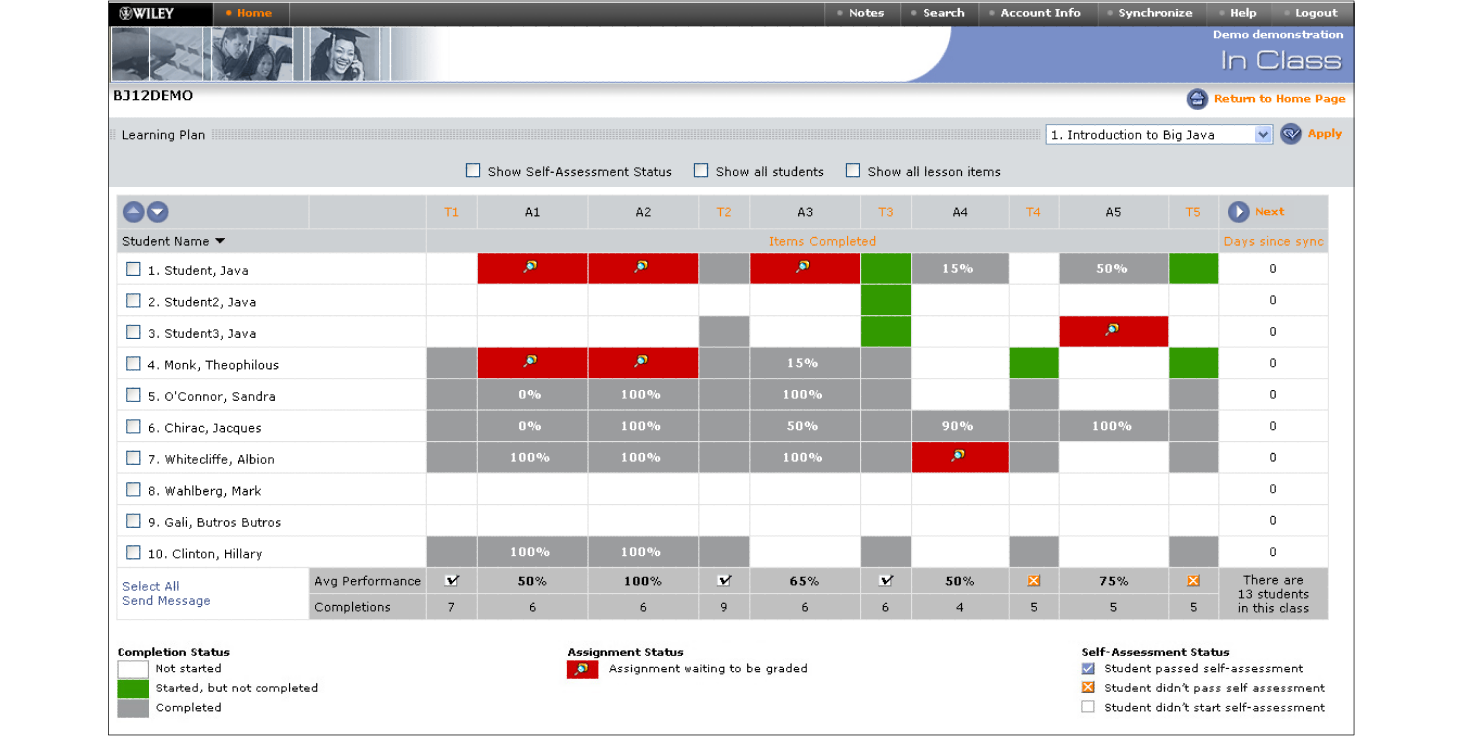
The instructor's learning plan shows the progress of students through the course.
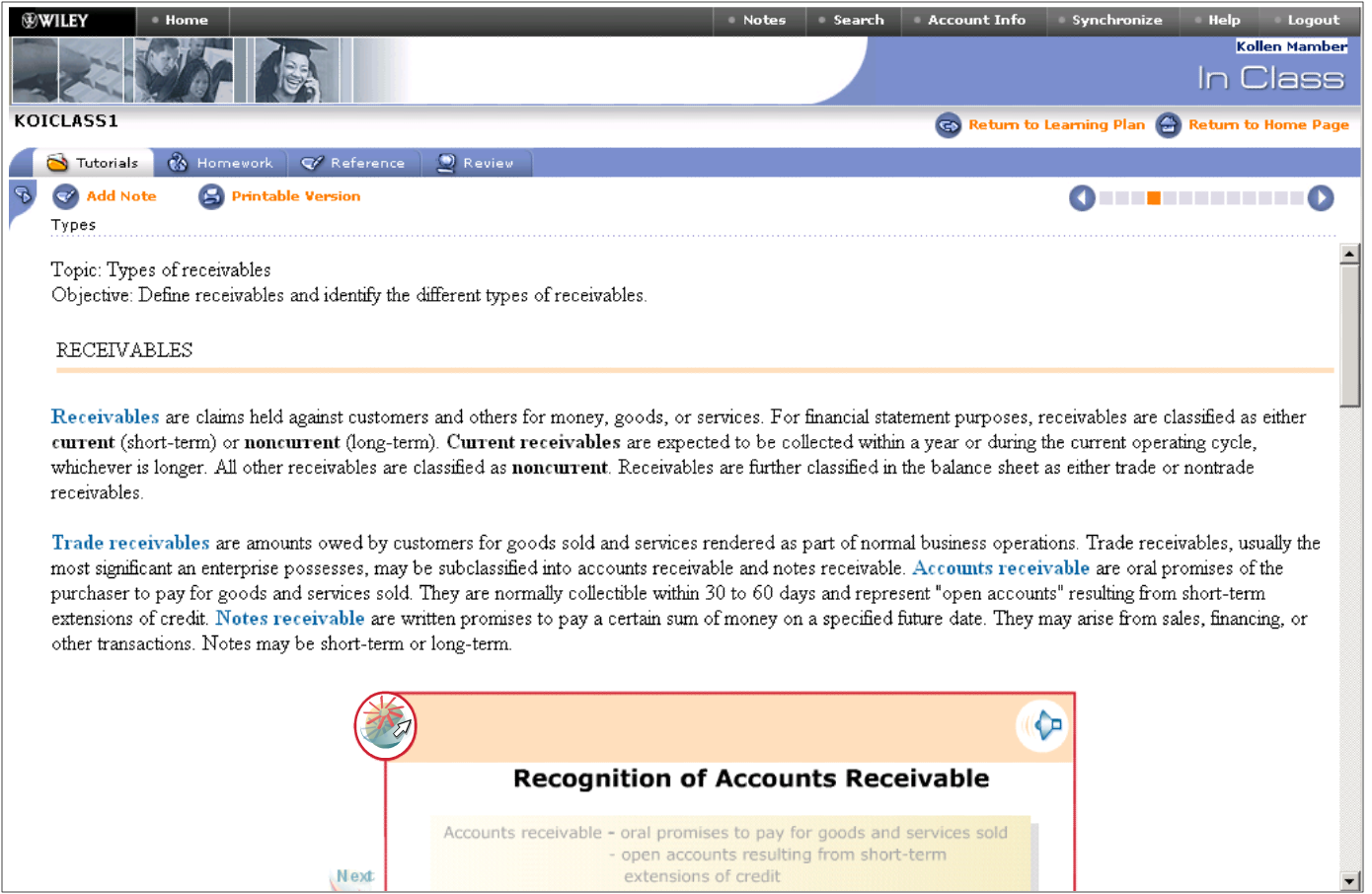
Page from a WeL course on accounting.
Deliverables: Developed the initial design concept for the Wiley eLearning (WeL) courseware platform and directed its development.

Many of the activities in WeL courses were self-grading, providing instant feedback to students and reducing instructor workload.
Roles: Multimedia Programmer, Graphic Designer
Customers: Global Knowledge
Requirement: Develop a library of reusable assets that can be easily reconfigured to provide a different “look and feel” to facilitate inexpensive and efficient customization for different customers.
Deliverables: A framework for interactive components used in e-learning courses.
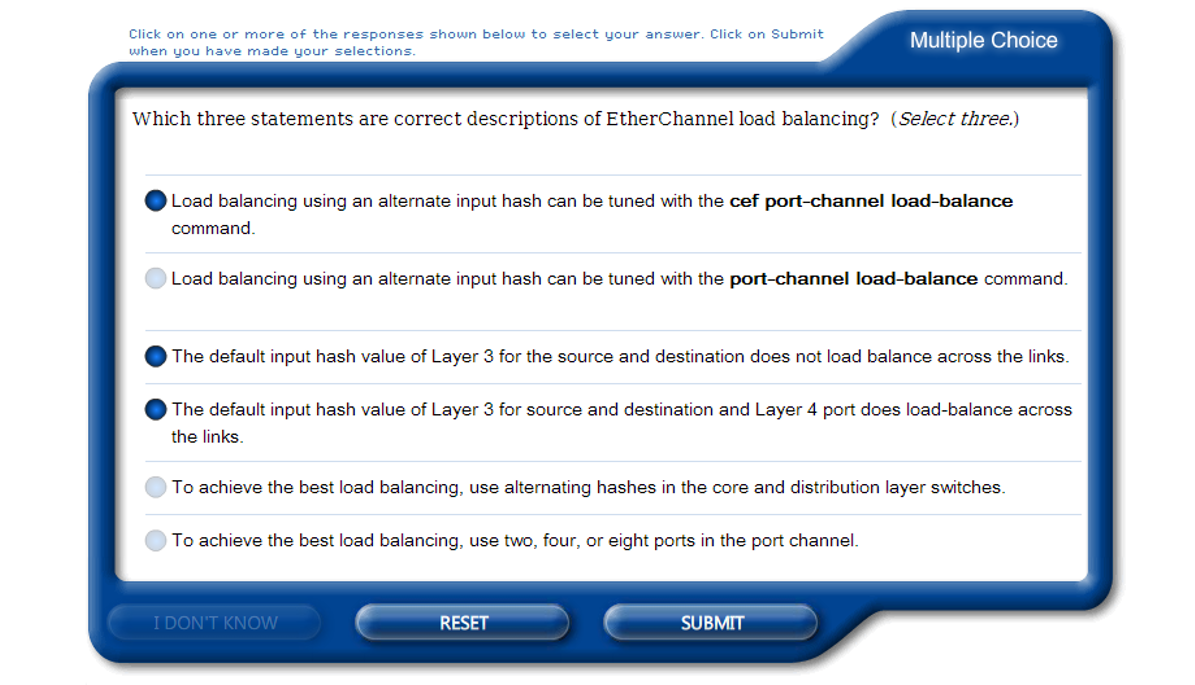
Example question in the “GK Blues” Theme
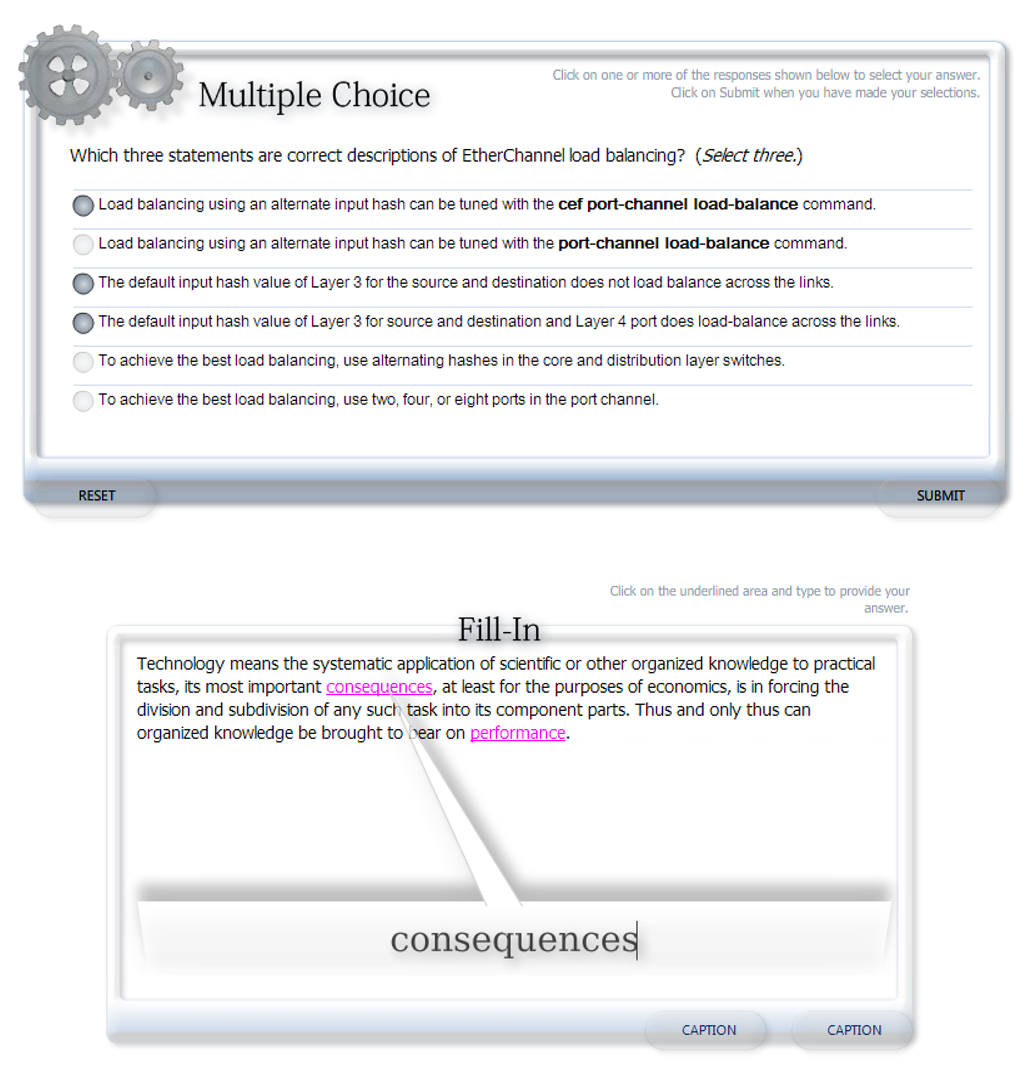
Example questions in the “Sea Glass” Sample Theme
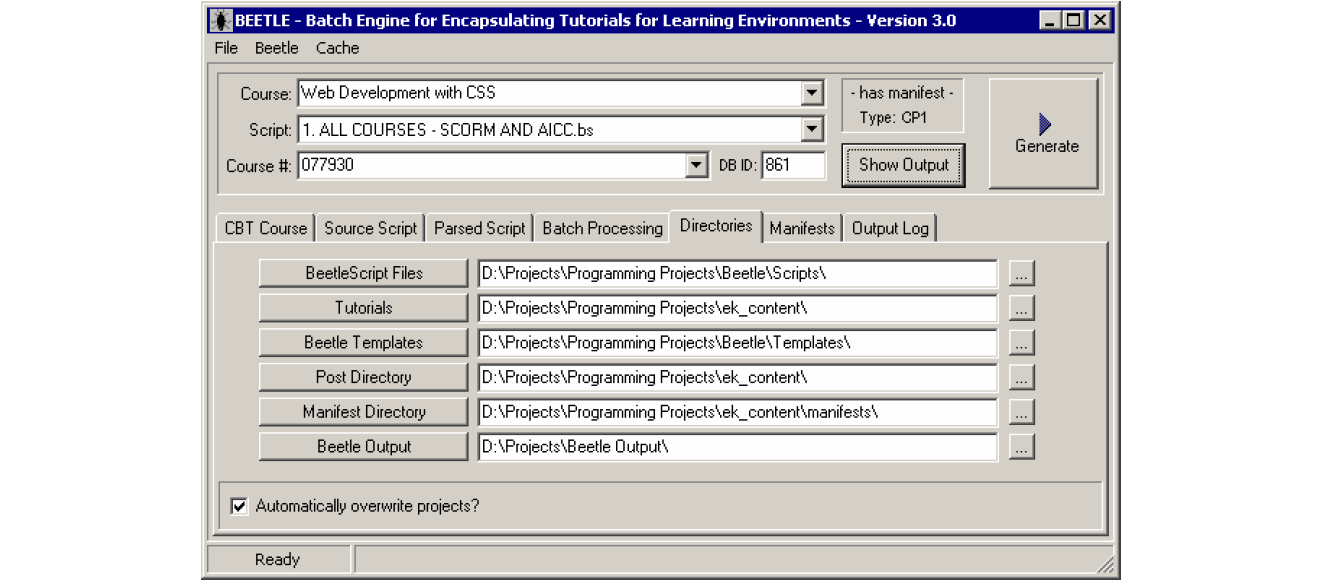
Main screen of the BEETLE application.
Role: Software Developer
Customer: Ziff-Davis Education
Requirement: Produce a software tool to automate conversion of e-learning course content for various delivery platforms, learning management systems, and course packaging formats.
Deliverables
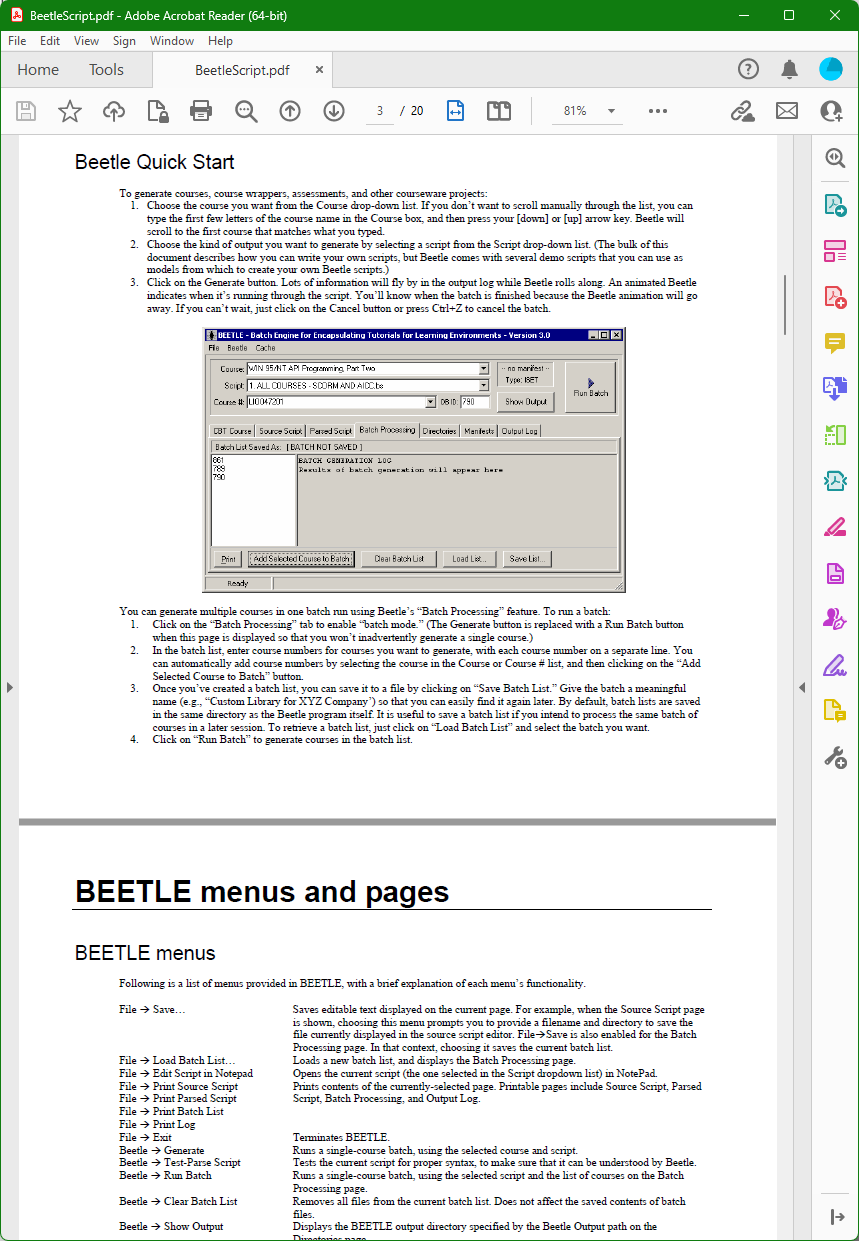
BEETLE Scripter's Guide.

Demo course shown in the SOLA player's progress tracking view.
Role: Software Developer
Requirement: This project was not prompted by a customer need. I developed this after-hours as the successor to the SCORM Debugger tool that I had created earlier. Unlike my SCORM Debugger, SOLA enabled me to test SCORM courses running from a web server (HTTP) rather than using local file protocol. By creating a totally self-contained web server and LMS running as a local desktop application, I reduced my testing cycle. I no longer had to upload files to a web server to test them running over HTTP. As I used the tool, it occurred to me that it had most of the elements of a course player that could be used to deliver courses on a CD-ROM while providing robust course tracking capabilities such as what would be available from an LMS. So I added offline course player features to the application. I never released this as a commercial product, although I have used it extensively as a testing tool.
Deliverables

Assessment activiy running in the SOLA player.
Role: Software Developer
Customer: Global Knowledge
Requirement: Develop an IMS/AICC packaged learning object that can be deployed on an LMS to provide detailed information about the LMS’s capabilities and detailed information that might be helpful for content integration and extending LMS capabilities.
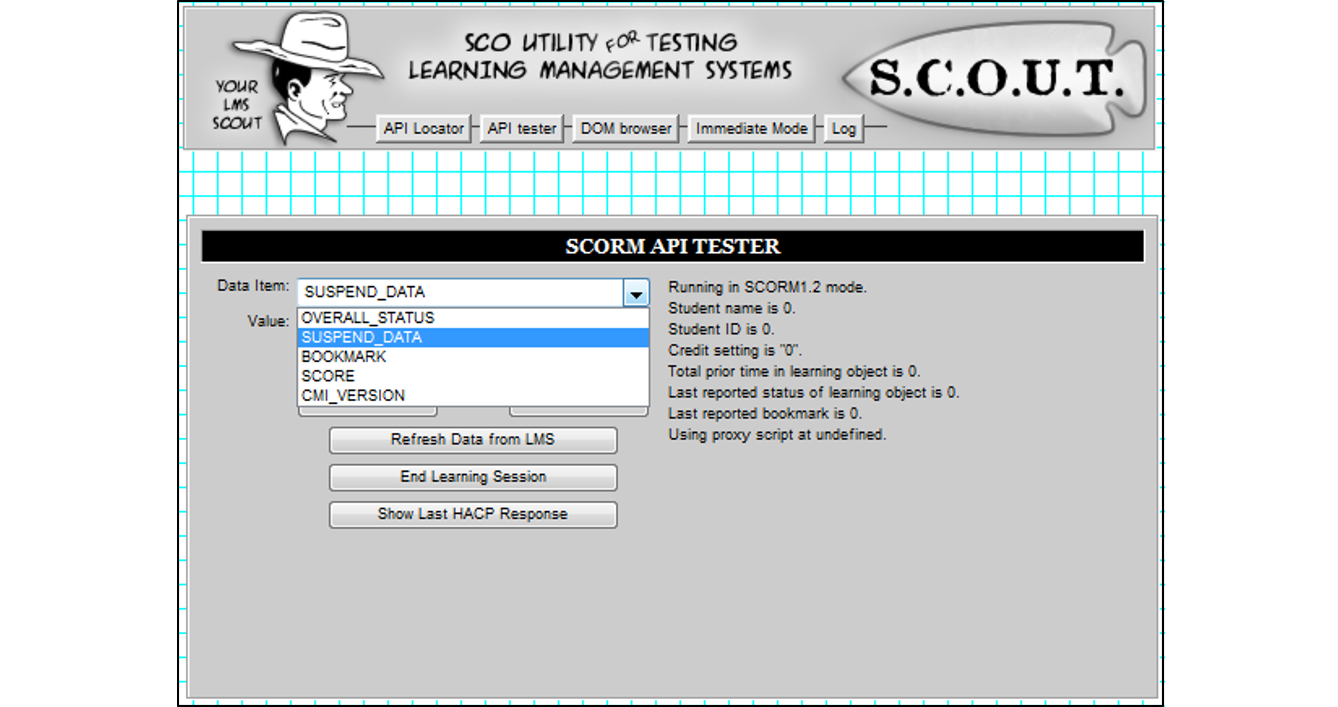
Testing tool that masqueraded as an e-learning course to assist in troubleshooting LMS content integration problems.
Deliverables
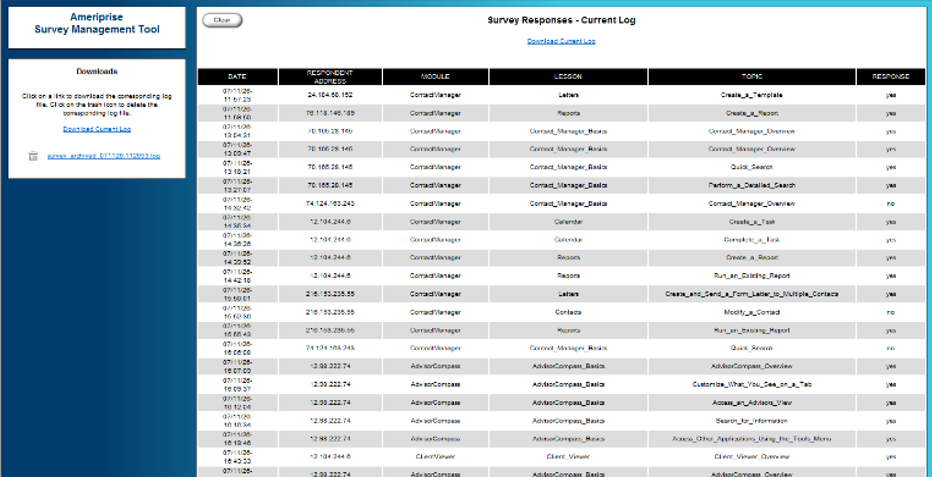
Course survey administrative tool.
Role: Software Developer
Customer: Ameriprise Financial
Requirement: Provide a simple course evaluation mechanism that can be integrated easily into e-learning courses developed by a variety of vendors. Data must be in a form that can easily be downloaded and aggregated into an Excel spreadsheet.
Deliverables
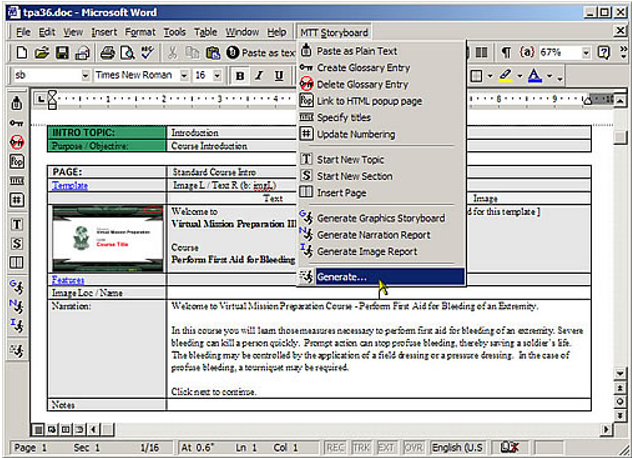
The VMT authoring tool automated the generation of animated learning modules in Adobe Flash, including synchronized voice-over narration.
Role: Programmer
Customers: MountainTop Technologies, Military Child Education Coalition, Pennsylvania National Guard, Global Knowledge
Requirement: Develop Microsoft Office plug-ins and extensions to enable Microsoft Word, PowerPoint, and Excel to function as rapid e-learning course authoring tools.
Deliverables
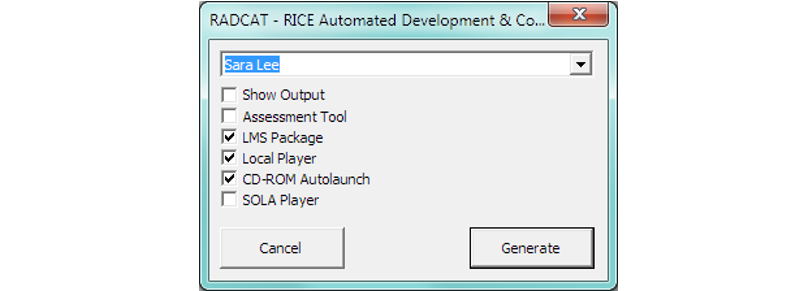
E-learning course generation options include CSS-based user interface themes and custom branding.
Role: Programmer
Customer: Global Knowledge
Requirement: Develop a standard programming interface for e-learning courses so the same course can play with progress tracking, scoring, and bookmarking on learning management systems supporting different tracking protocols (e.g., AICC, SCORM) without requiring re-programming or other modification.
Deliverables

HTML files containing JavaScript code to support various LMS protocols.

The e-learning framework was highly configurable through settings in a JavaScript file.

Monitoring communications between an e-learning module and the LMS.
Role: Software Developer
Customer: Element K
Requirement: Analyze and debug runtime communication of learning objects.
Deliverables
Roles: Manager of New Product Development, Instructional Designer
Customer: Ziff-Davis Education
Requirement: Develop a cost-effective alternative for producing e-learning courseware. LearnItOnline consisted of web-based self study tutorials. Applications (such as Microsoft Word or Excel) were presented on the Web page as a simulation. Within the simulated application, learners would perform tasks in step-by-step fashion as the narrator prompted. Feedback was provided when learners didn't perform tasks correctly.
Another company produced simulations for us using their proprietary development tools and browser plug-in, which was optimized for producing software simulations. However, it was slow to produce content with that technology, and very expensive.
When Shockwave for Director was introduced, we developed a production toolkit based on Director, which enabled us to produce courseware that was faster to download, more robust, and much less expensive to produce. Using Director, we brought production completely in-house.
Deliverables
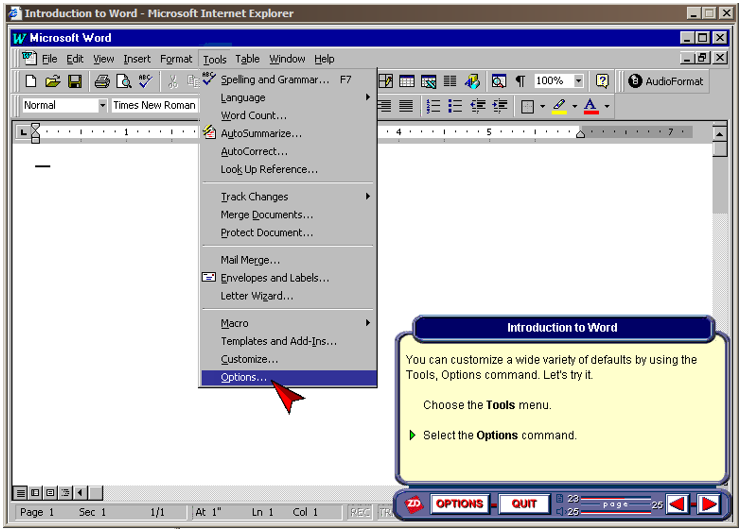
LearnItOnline e-learning course.
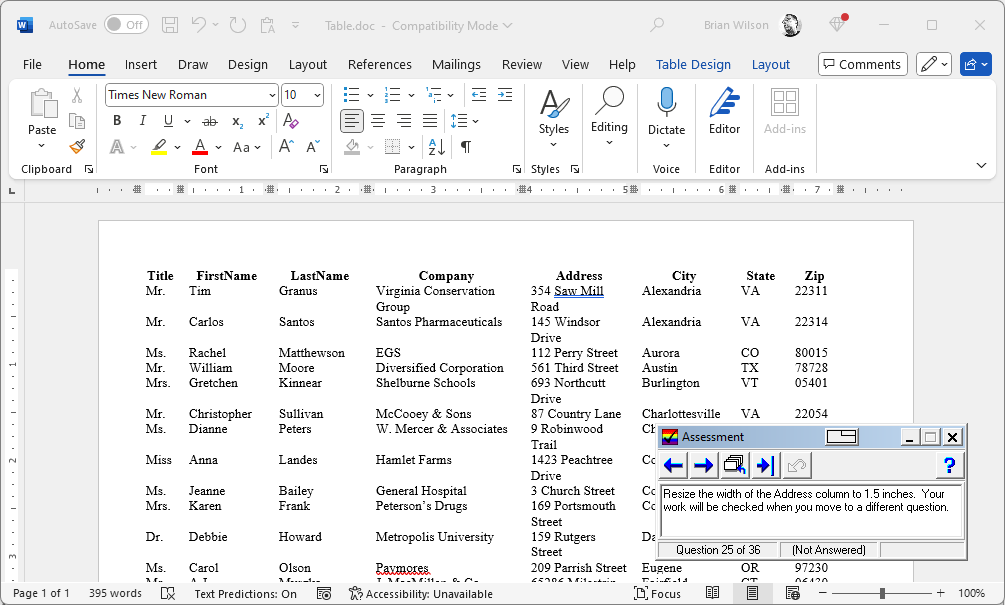
Roles: Manager of New Product Development, Software Architect, Programmer, Assessment Author
Customer: Ziff-Davis Education
Requirement: Authentic assessments evaluate students by having them actually perform real-world tasks, rather than having them answer questions such as multiple choice or true-false. They are generally considered to provide a better evaluation of a student's ability to actually perform a task. The challenge for this project was to develop a tool to deliver computer skills assessments for common productivity applications such as Microsoft Word, Excel, Lotus Notes, and so forth.
The product had to provide authentic assessments within the actual software environment and provide a comprehensive library of pre-written assessment tasks, which course authors could build upon. The product also needed to include all of the authoring tools necessary to customize and add to the library of assessments and be deliverable to learners via disk, network, or as an email attachment.
Deliverables
Designed and supervised development of Skills Assessment Manager (SAM):
Designed and developed Skills Assessment Delivery Interactive Engine (SADIE):

Roles: Manager of New Product Development, Software Architect, Content Author, Instructional Designer
Customer: Logical Operations
Requirement: Develop hybrid-learning product features to differentiate the company’s instructor-led training materials from competitive products.
Deliverables

Life Simulation - An implementation of Conway's life simulation that I created in JavaScript, CSS, and HTML.

Up! House Wedding Cake Topper - The bride and groom were getting married on 7/1/17, and wanted a cake topper paying homage to their favorite movie. So I created this animated cake topper out of wood, and animated it to show their wedding date (a palindrome) spinning to show the same date either way.
